Practicum Highlights
Yoga
During my practicum I incorporated yoga in the Montessori grade 4/5/6 classroom as part of the physical and health education curriculum. We often did it outside in the garden or under the oak tree. Taking yoga outside was crucial to the atmosphere and environment it created for the students to be mindful and aware of their own learning. Our physical education learning translated well in the classroom where students were able to use focus and breathing techniques to concentrate on other work.
Kingdoms of Life
I taught the entire science curriculum in my grade 4/5/6 Montessori Classroom. We began by exploring cells and microscopes, learning the difference between animal and plant cells and comparing prokaryotes to eukaryotes. Students chose between a plant and animal cell and represented its organelles by a metaphor that accurately describes its function in the cell. The students were amazingly creative! One student made his entire cell a metaphor, calling it a ‘town’ and all the organelles were different aspects of a well functioning town.

The finished cell posters.

A grade 4 student’s finished cell poster.
My expectations with the students were clearly communicated through the use of a self-assessment checklist that outlined all criteria of the project. Because my expectations were clearly communicated and lofty, students worked assiduously to meet them. I received very good quality work and I could tell the students were putting in a lot of effort.

We used the microscopes during our Cells and Microscopes unit. The students were encouraged to use them whenever they felt like exploring further. In this photo, we were comparing onion skin to a sample of cheek skin to observe the difference between animal and plant cells.

“Look! Ms. Langille! We made a prokaryote bacterium out of geometrical shapes!”
After our study of cells and microscopes we moved into the study of Microbiology! Students were introduced to the kingdoms of Bacteria and Archaea, Protists and Fungi!
During our studies of the kingdoms students became familiar with classification. We classified organisms based on 4 main characteristics.
1. Cell structure: prokaryote or eukaryote?
2. Number of cells: multicellular or unicellular?
3. Nutrition: how does the organism eat? what does it eat? (Herbivore, omnivore, carnivore, producer, consumer, decomposed..)
4. Movement: how does it get around? Can it move?
Students were divided into groups and given a ‘resource packet’ – a ziploc bag with books, photos, examples, stories, definitions – and were expected to sift through and compile the information they deemed important to convey to the class in a thoughtful presentation. The students in my grade 4/5/6 class are drawn to drama and skits and so I tried my best to incorporate that in almost all of our learning. The students could share their learning in the form of a skit, story, song, dance or any presentation style they decided on.

The resource packets

Students arranged bacteria, archaea, fungi and Protists on the tree of life!
The students presented their kingdom to the class in an effort to teach their classmates about the important characteristics of their kingdom. Students were incredibly creative and knowledgeable! Although there was much content learning, the students often used critical and deep thinking to pose thoughtful questions about different aspects of the kingdoms.
We then moved into the Animal Kingdom! Students used our 4 characteristic system to classify which organisms fall into this kingdom.
1. Cell structure: eukaryote
2. Number of cells: multicellular
3. Nutrition: Herbivore, omnivore, carnivore
4. Movement: most animals can move (flying, walking, running, swimming)
During our study of the animal kingdom we focused on animal adaptations and evolution. We played the game of telephone on the carpet to reinforce the concept of DNA mutations and how over time, mistakes are made and things change!
Students applied their knowledge of both behavioural and physical adaptations and designed their own animal. Here are a few examples:
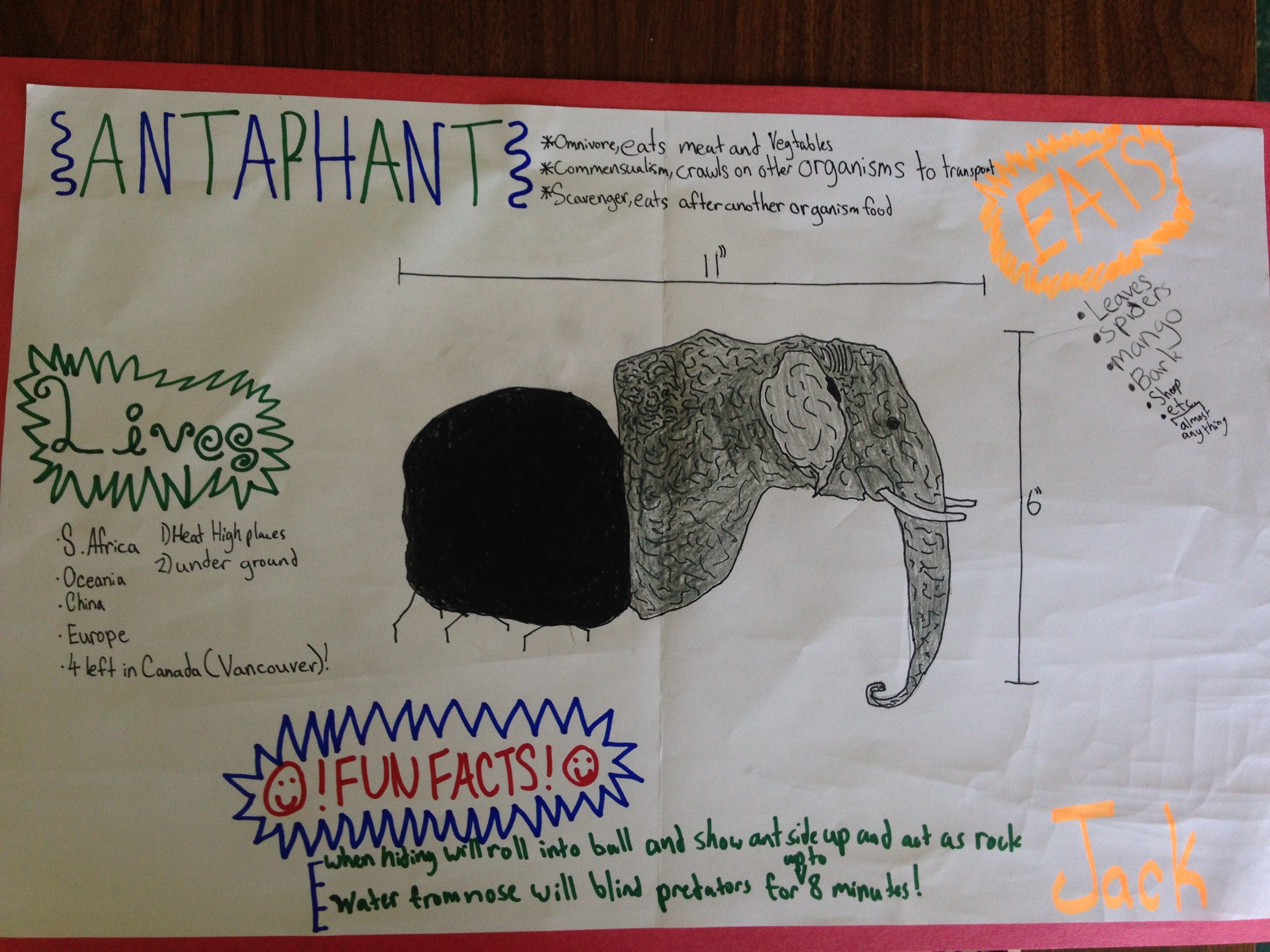
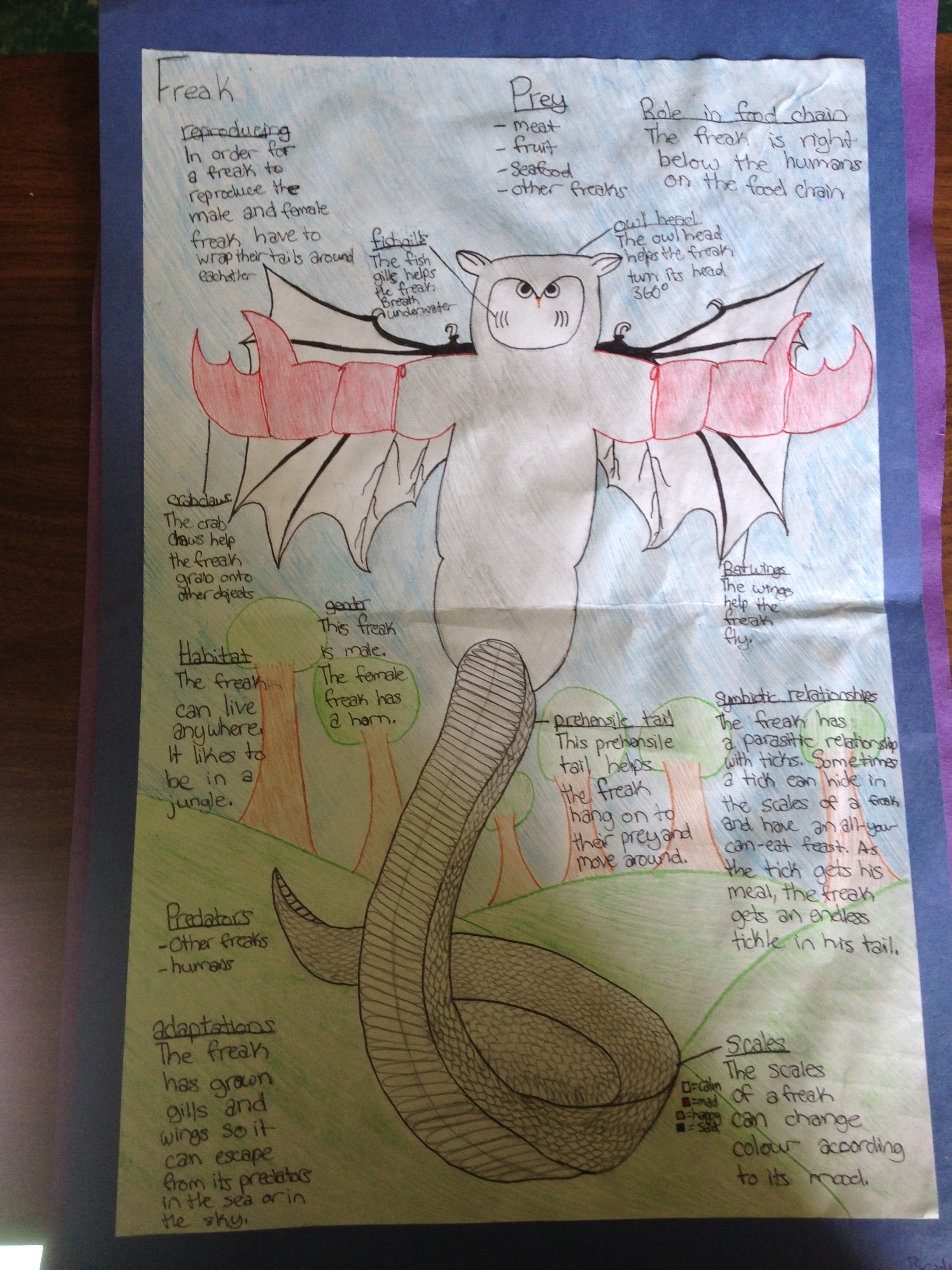
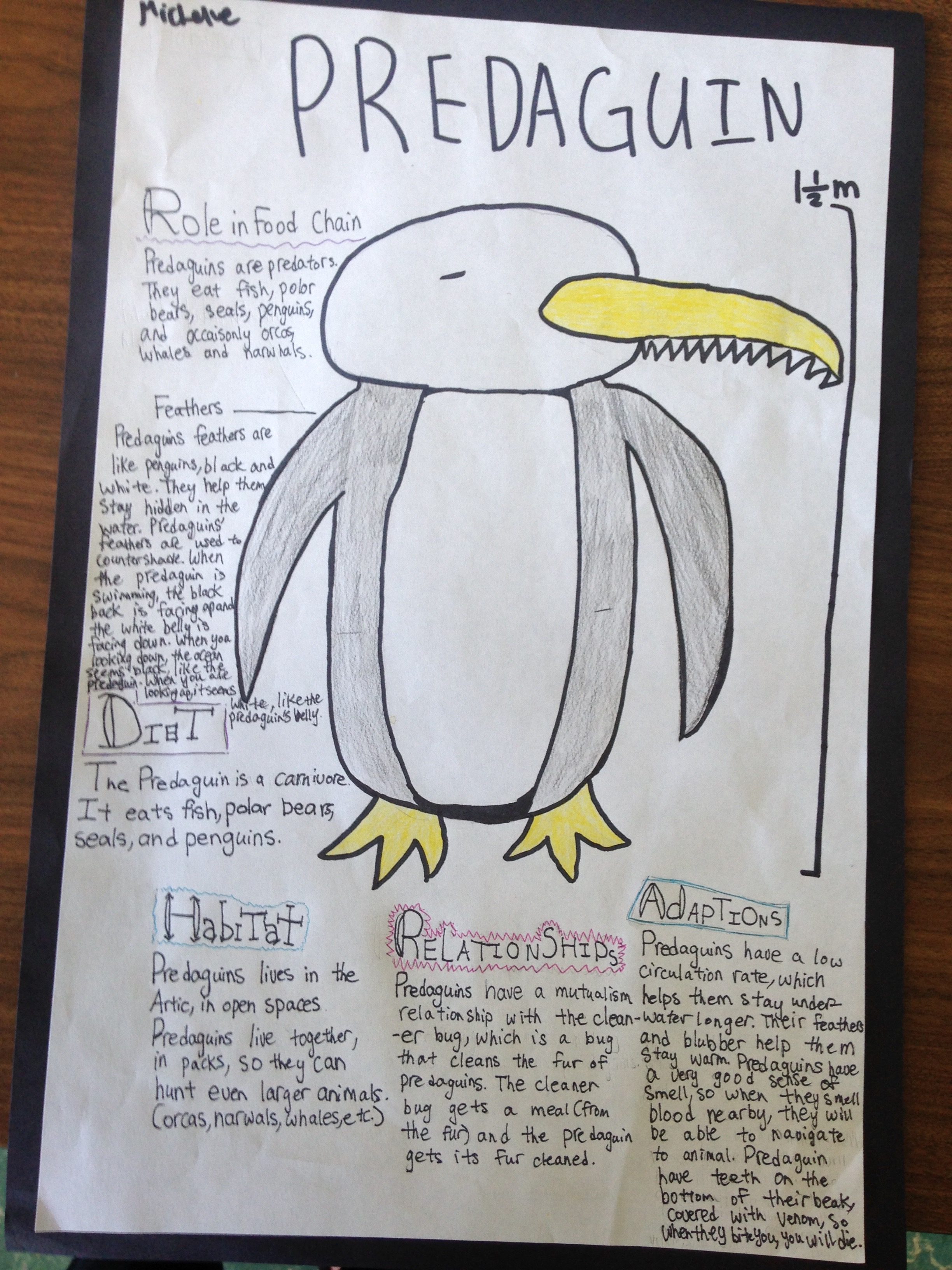
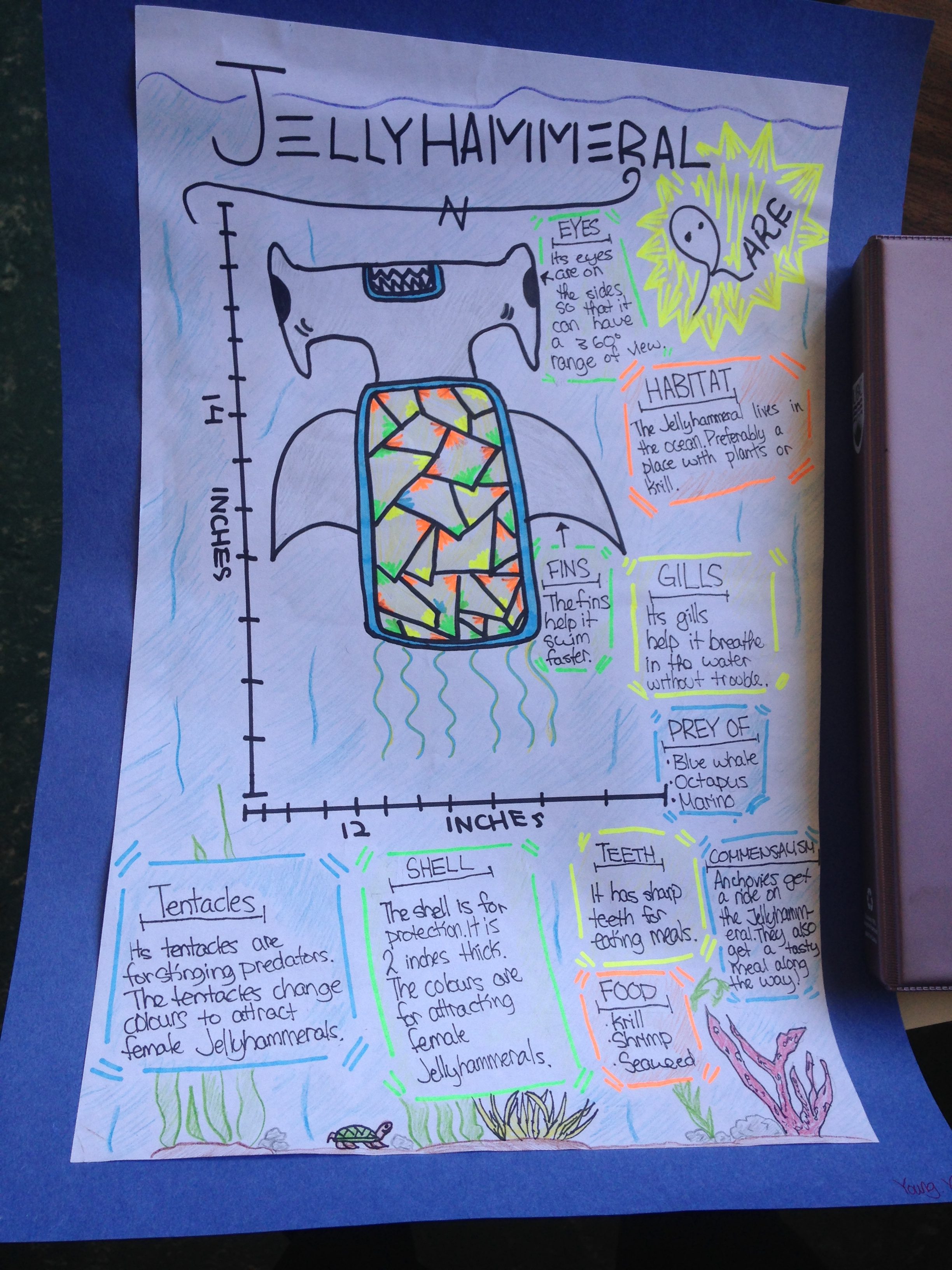
We studied the plant kingdom by beginning with the evolotionary history of plants. The students were asked to consider this drawing on the board with very little prior knowledge and to represent it in their visual journal. They were then asked to consider why something, like the plant kingdom would be illustrated in such a way. A few students took the risk and pieced it together. Using critical thinking… And a few painful moments of silence and scrunched up faces trying to decipher the illustration, we were able to come to an understanding of the different branches of the plant kingdom.
From there, students were divided into 4 groups:
1. The bryophytes
2. The seedless vascular plants
3. The gymnosperms
4. The angiosperms
Students were given resource packets and worked together as a group to showcase their group of plants on the evolutionary timeline. Groups presented using drama and storytelling and were quite creative in their teaching of the content to their classmates.
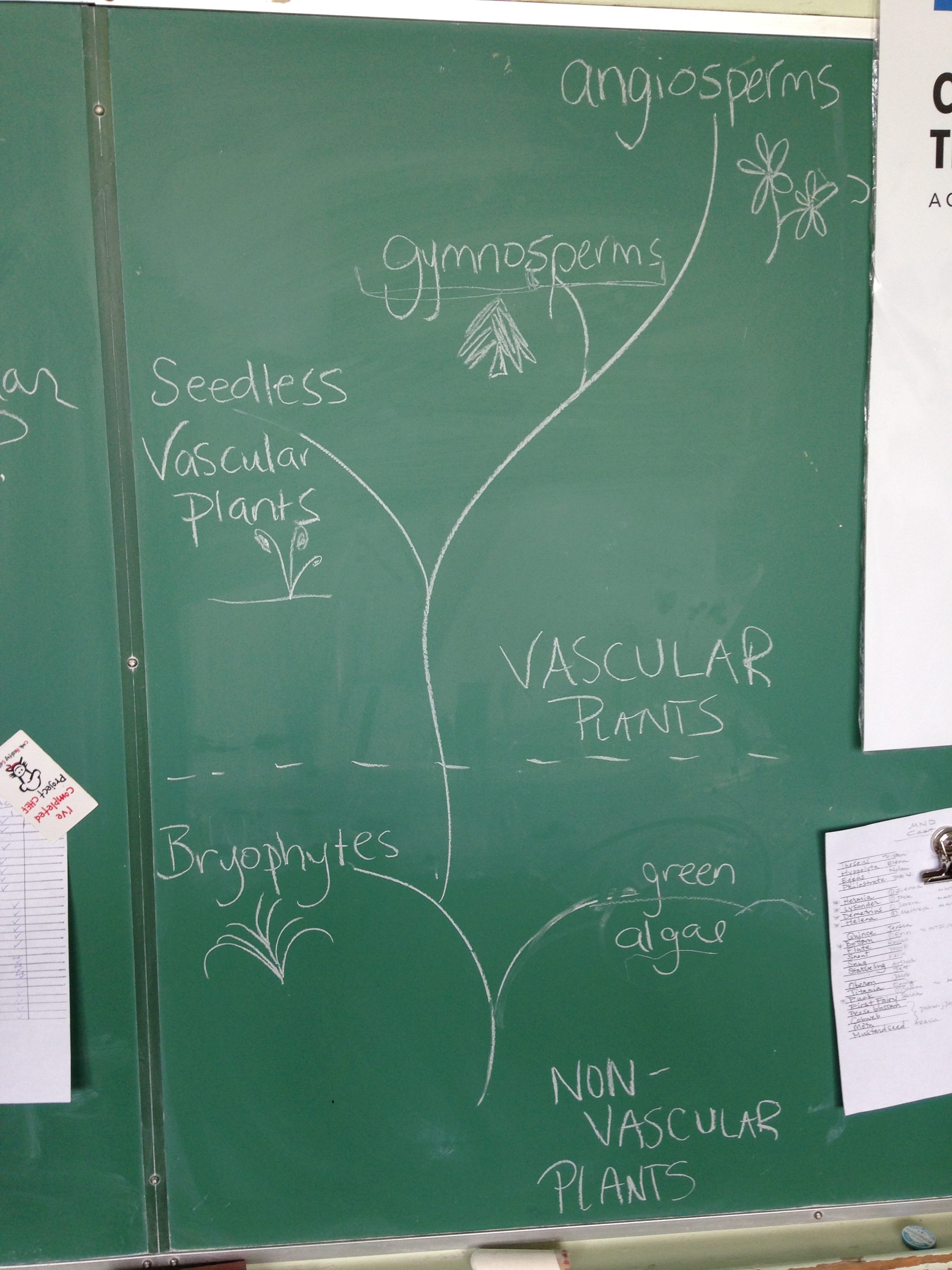
[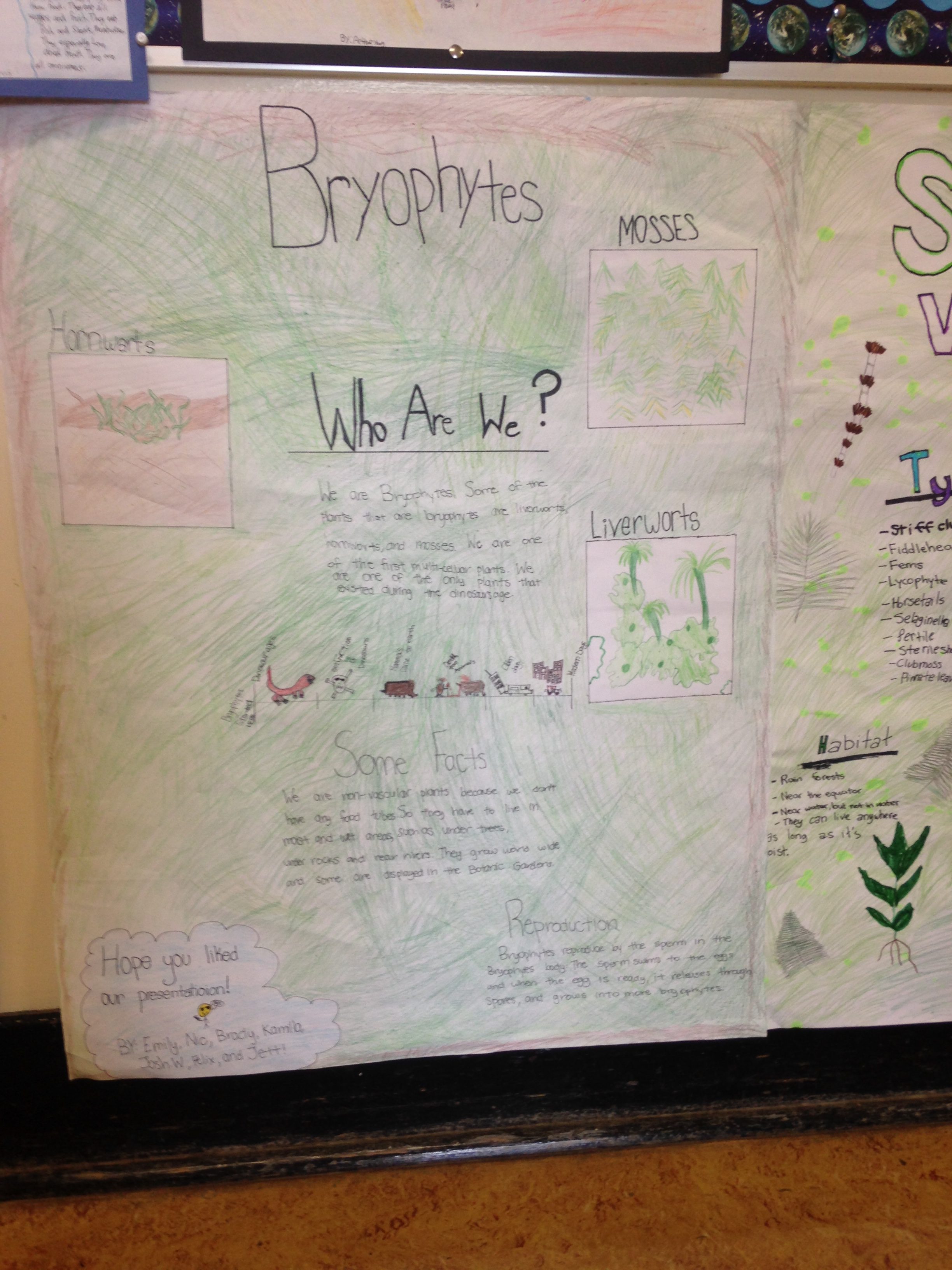
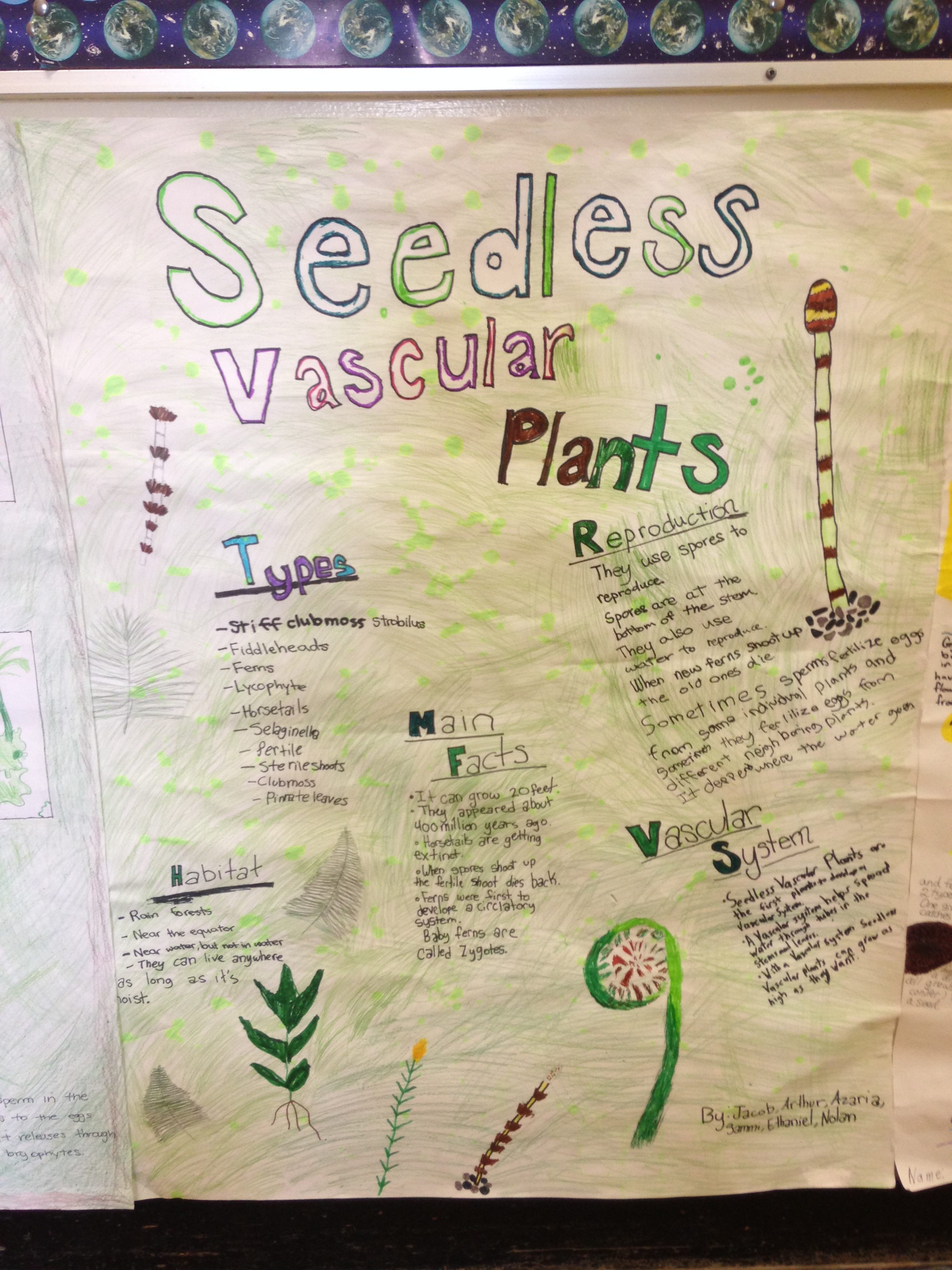
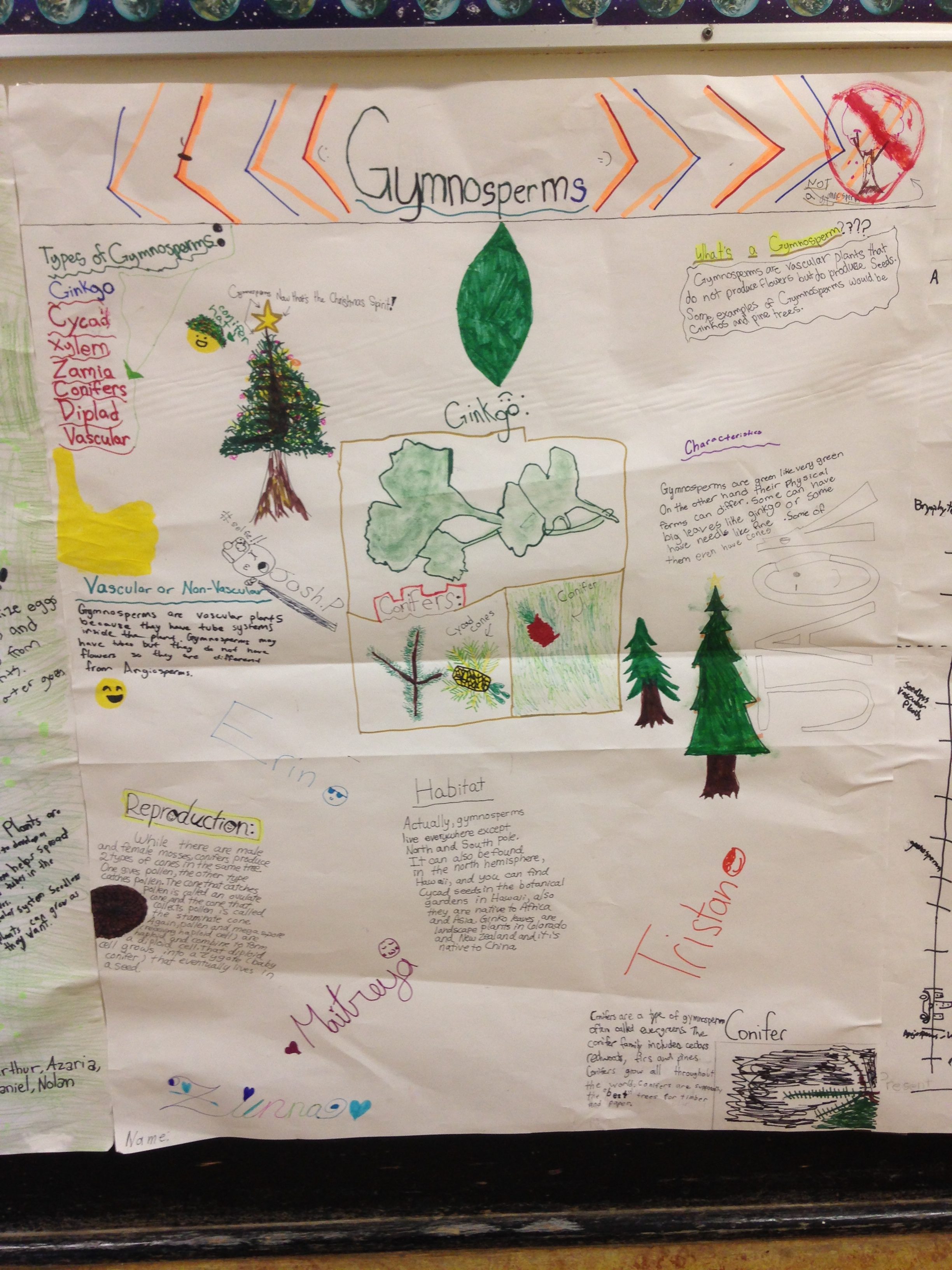
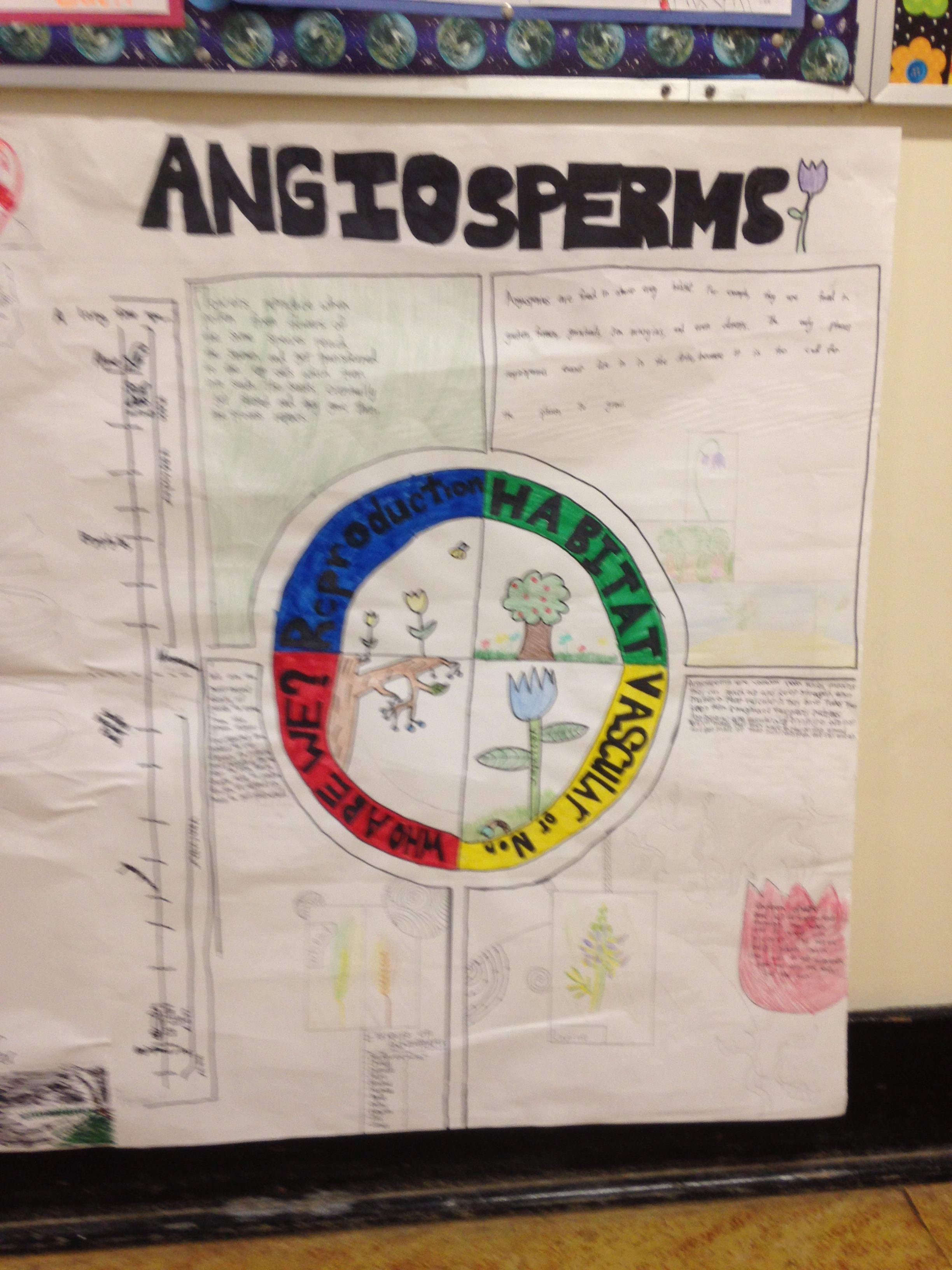
After spending so much time during our animal kingdom unit on adaptations we brainstormed plant adaptations. Students were able to come up with things like: waxy cuticle, roots, vascular tissue, fuzzy hairs, height, seeds, cones… And on.
We used all our senses in a multi-intelligence lesson by dissecting radish plants in our learning partners. Students drew accurate scientific drawings and used descriptive language to document what they saw. They listened to their radish and recorded the radish’s story… Whatever that happened to be! Students smelled the radish, they touched the radish, noting the many adaptations that this plant has (a vascular system, roots, leaves, fuzzy hairs on the leaves, and colour). Students were then able to eat the radish and document how it tasted and what the experience was like.
The students were so engaged and thoughtful in their answers. The content knowledge, critical thinking and creativity that they produced was inspiring!
Examples:

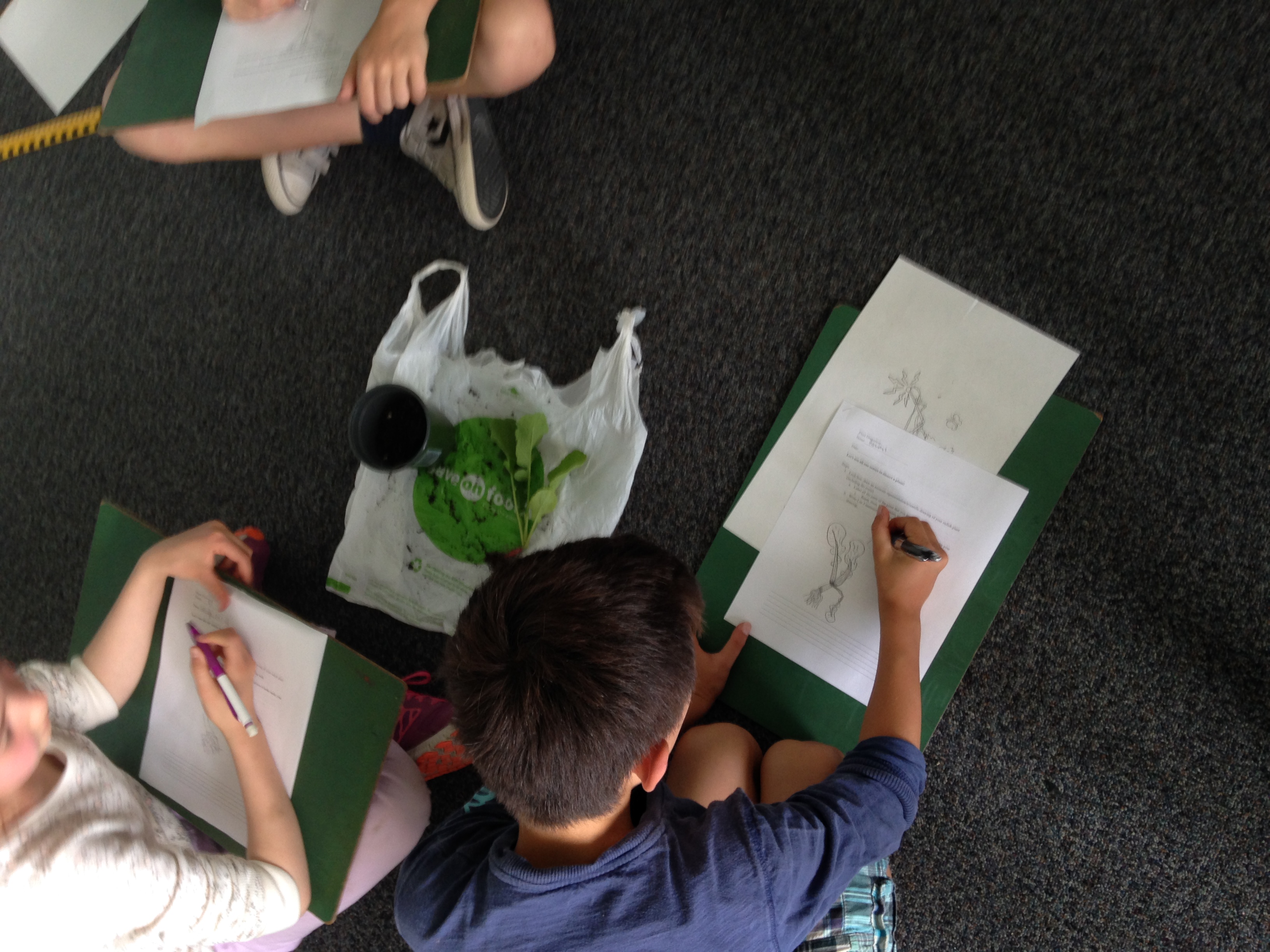
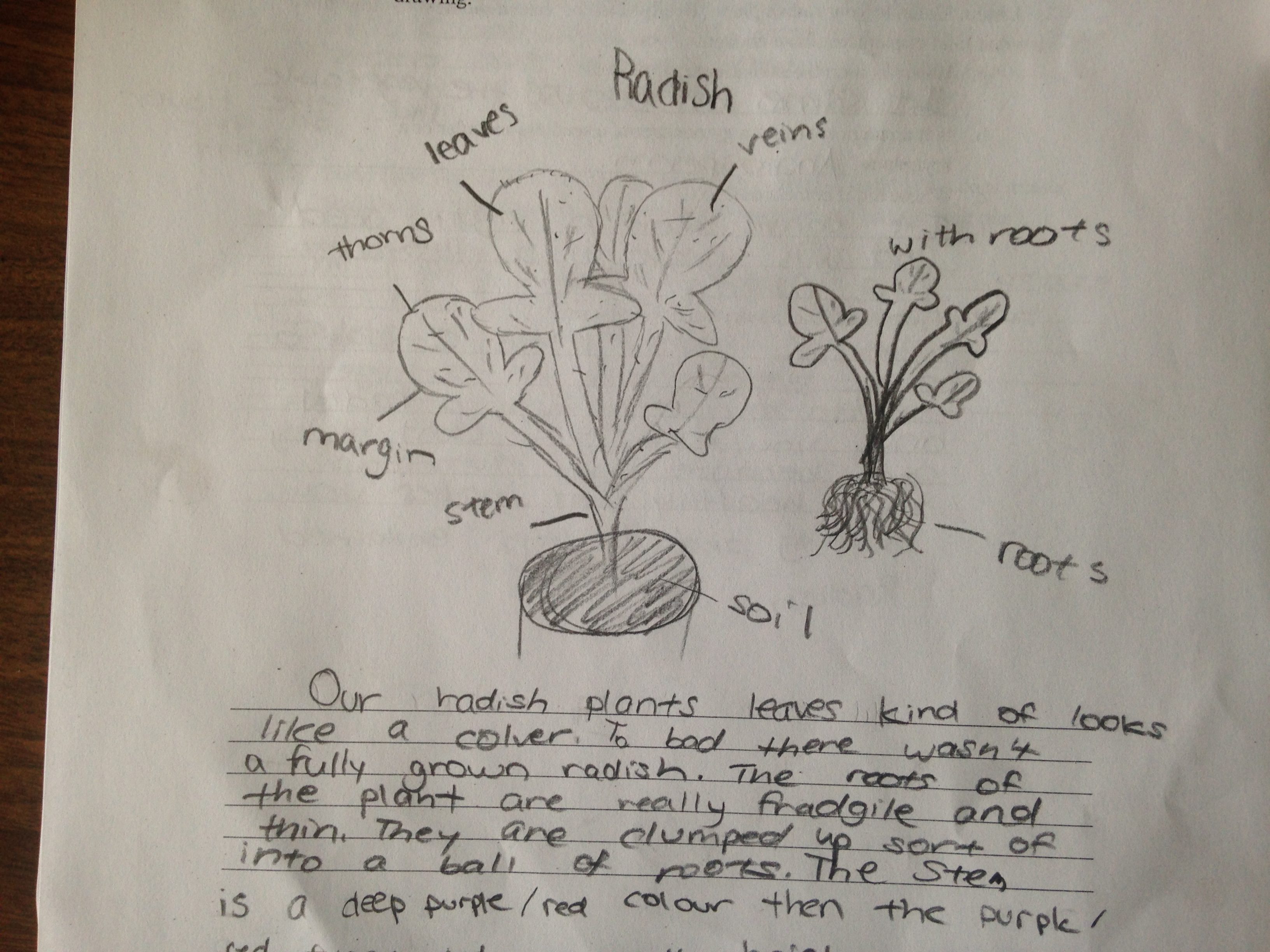
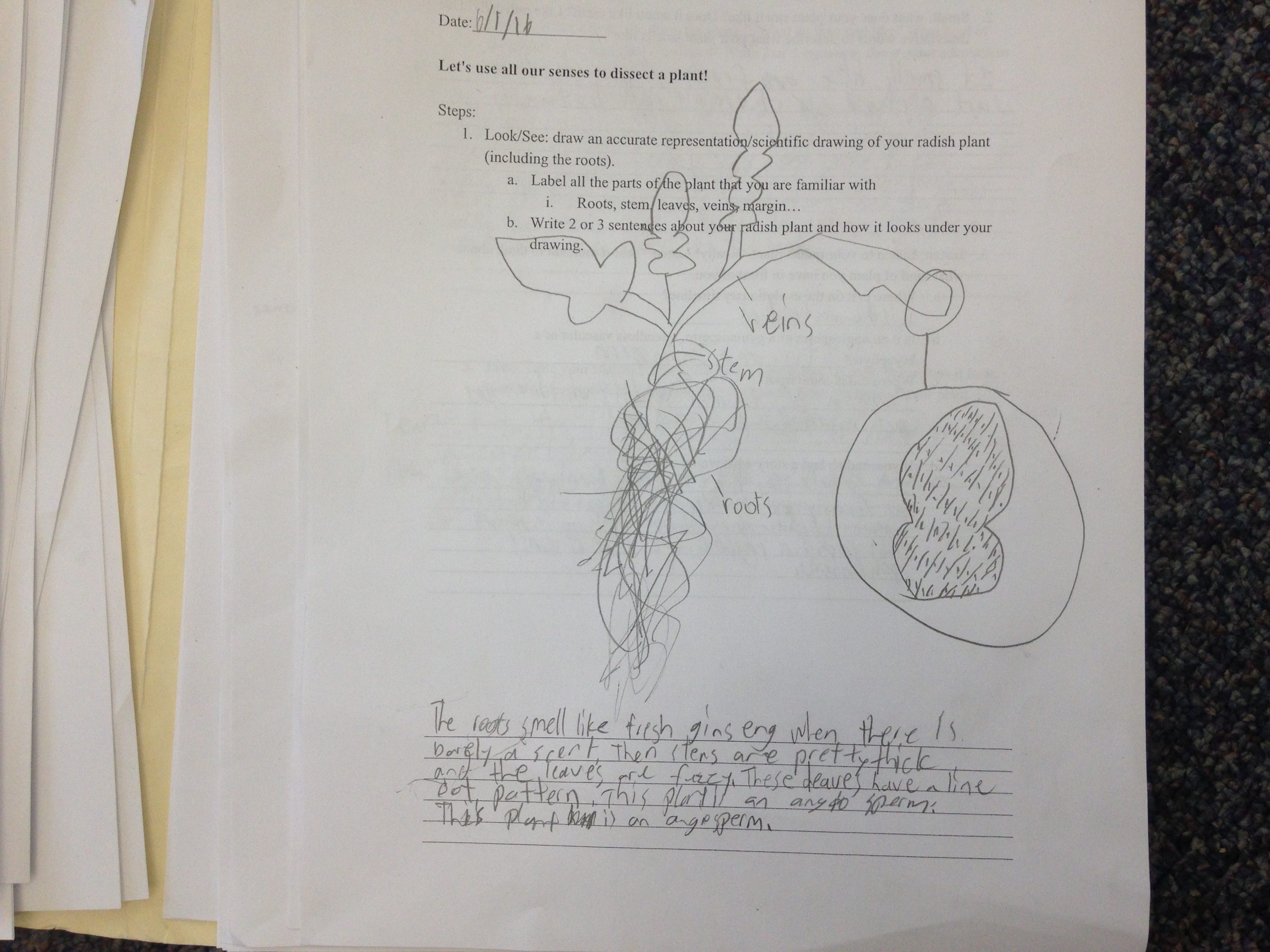
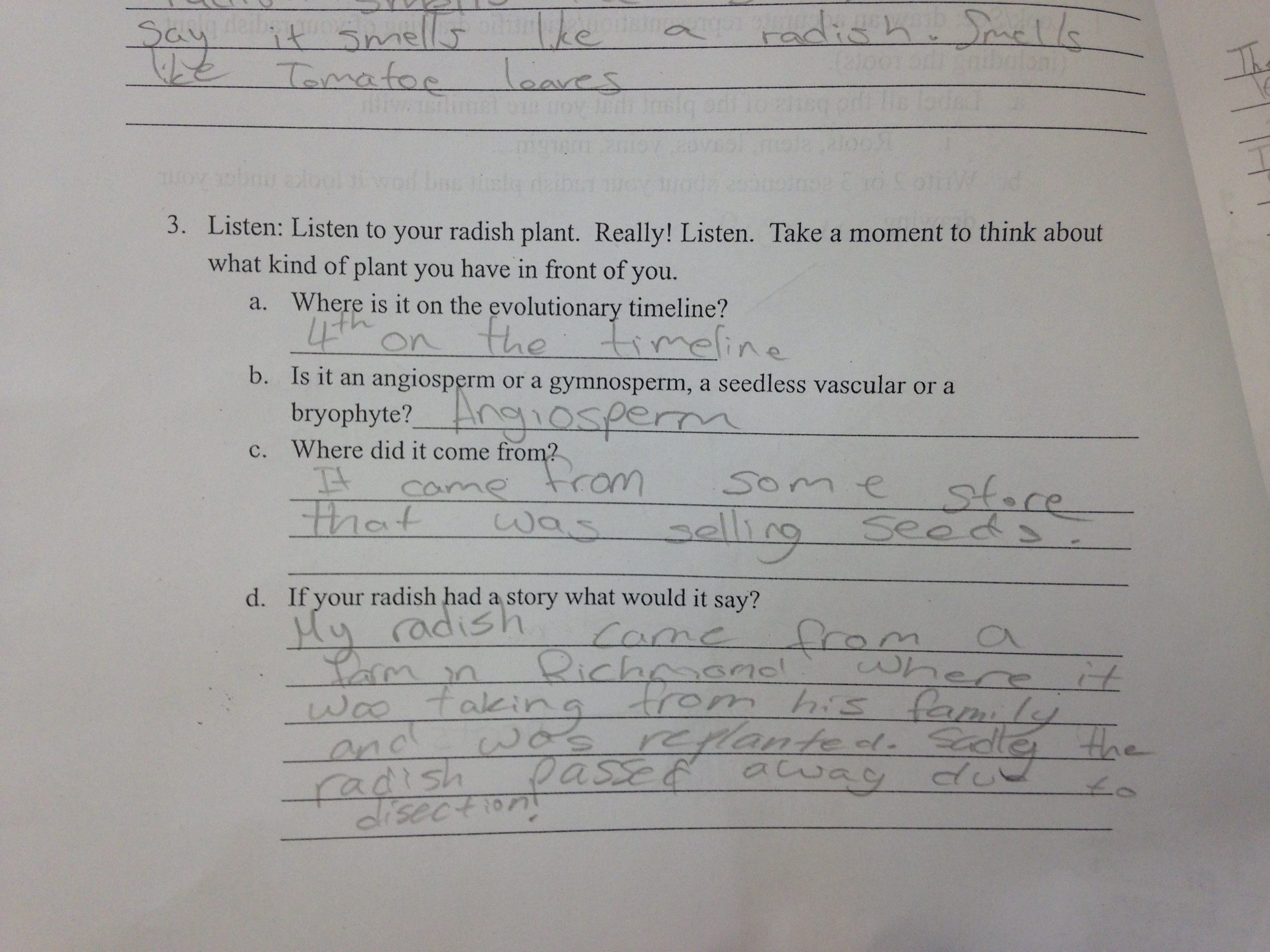
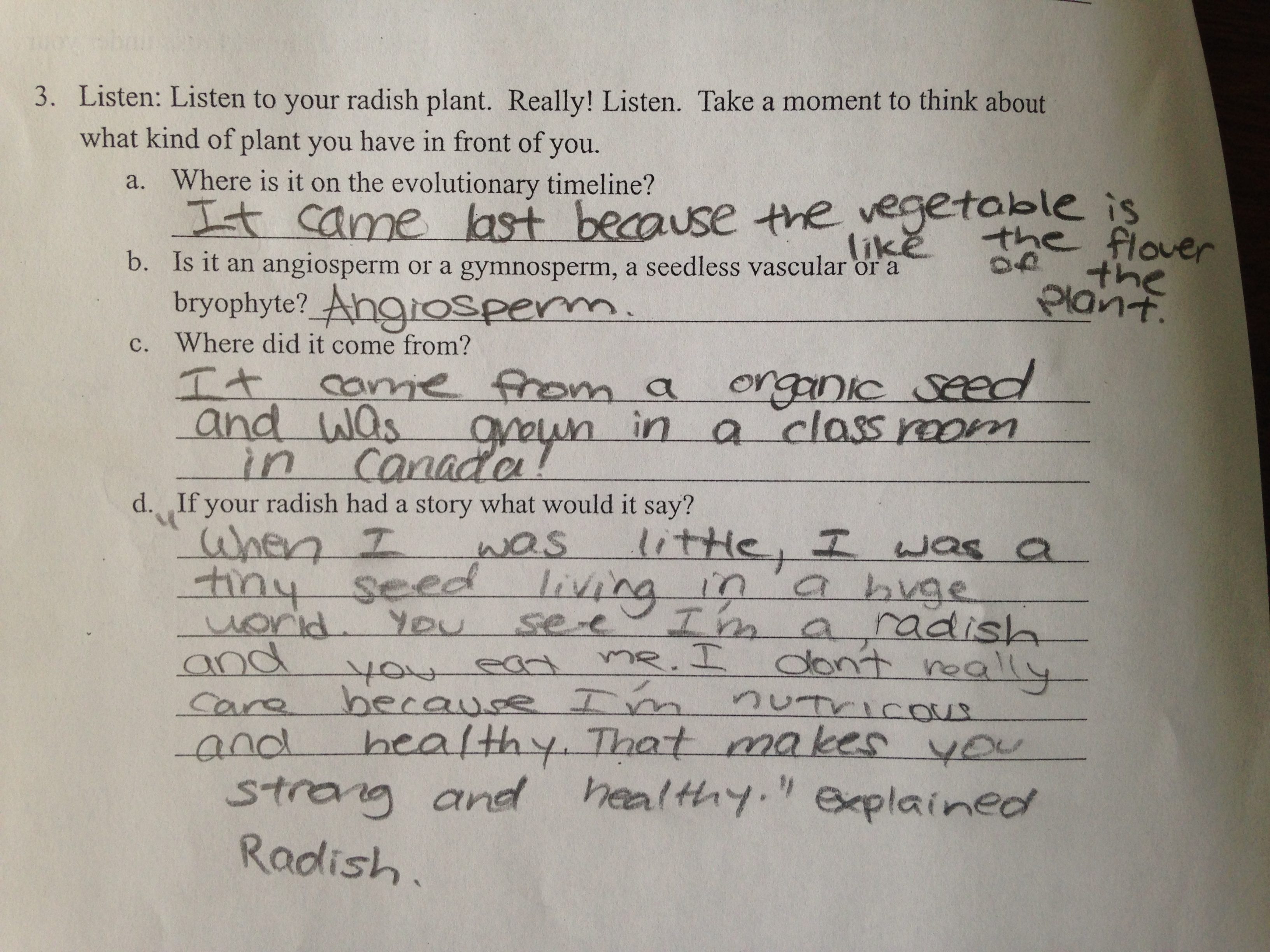
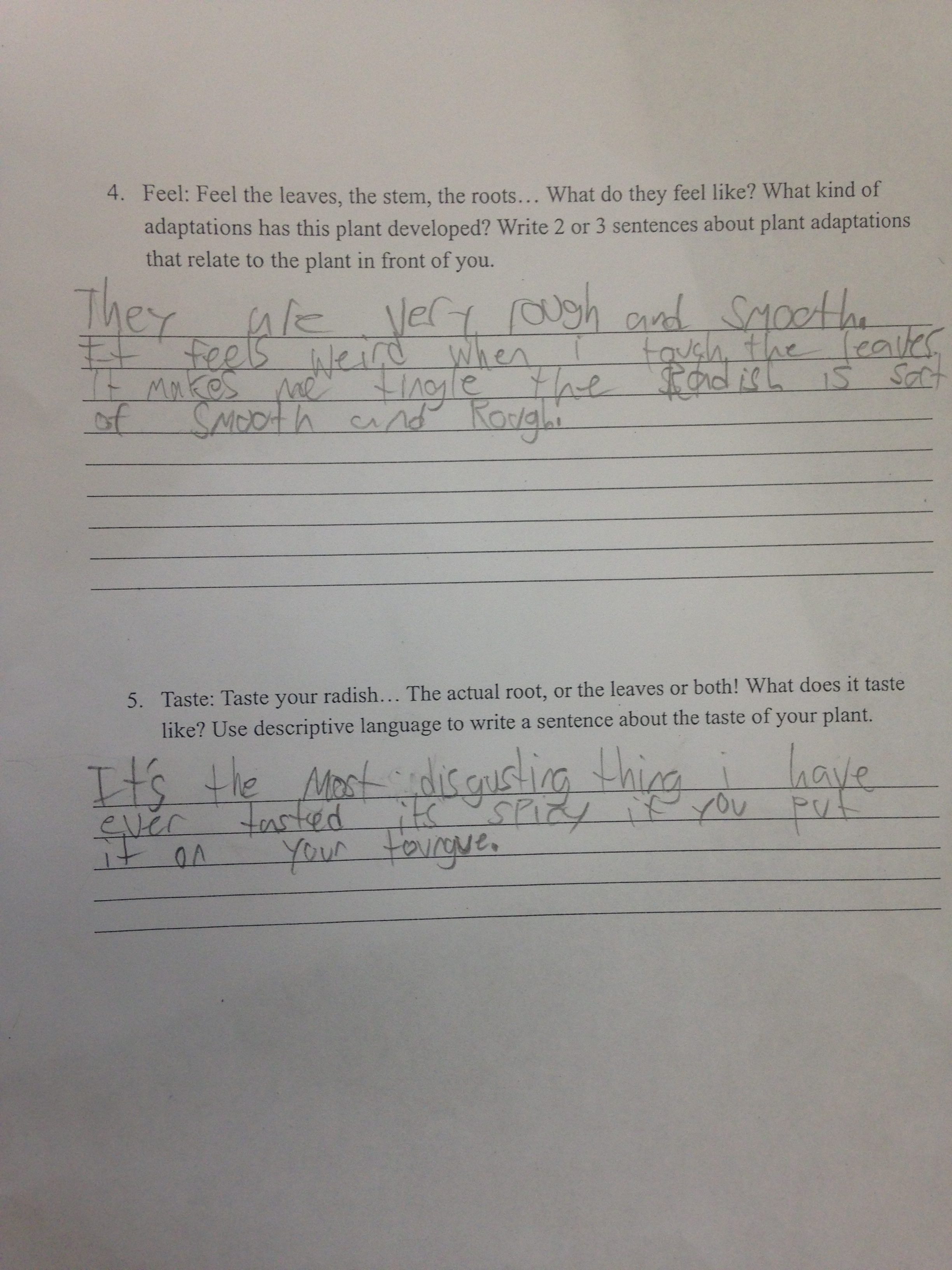
Poetry
In the primary 1/2/3 Montessori classroom I had the pleasure of teaching an extensive poetry unit that was built on the three pillars of poetry: emotion, imagery, and music. Students listened to, read, wrote and embodied poem. They learned about several types of poems and were challenged to use poetic and figurative language in their own writing. Each student completed a poetry booklet filled with their own poems written in class. The unit culminated with a “Poetea Party” where students shared their favourite poem with classmates and family member who I had invited to join in this celebration. This unit inspired me to continue and further my own writing and love of poetry, but also the students. Students wrote poetry at home and in the car on the way to school!
